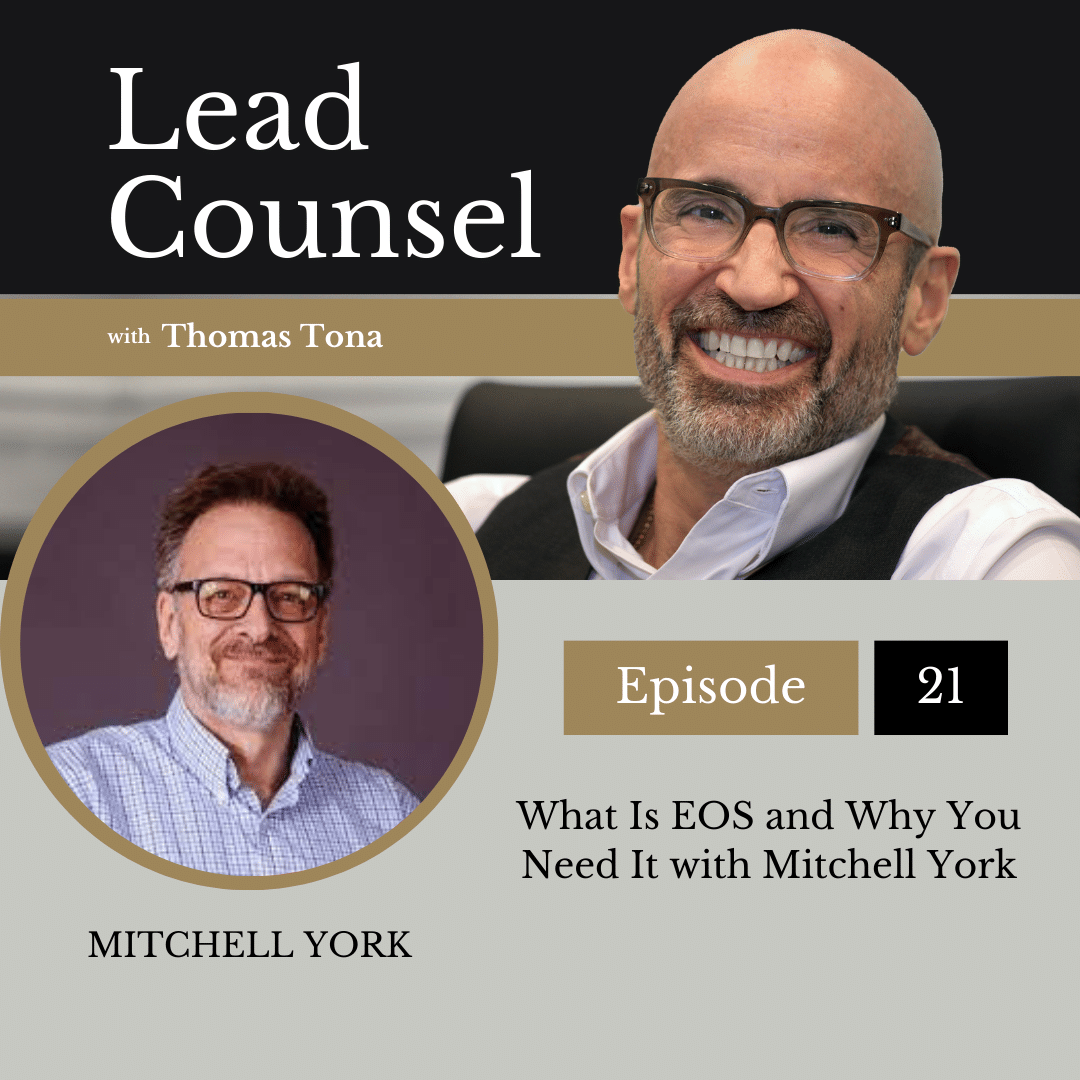Ever wondered how successful entrepreneurs break through the ceiling of growth and steer their businesses toward sustainable success? Our guest, Mitchell York, an EOS implementer and former president of Lending Tree, shares his unique insights and experiences on how the Entrepreneurial Operating System (EOS) can be pivotal for any business aiming at robust growth and improved efficiency. He takes us through his journey of discovering EOS, implementing it in various companies, and how it has helped businesses make informed decisions about its applicability using a complimentary 90-minute introductory meeting.
In this episode, we unpack the significance of identifying and understanding the root cause of issues and creating actionable plans to resolve them. Mitch shares his expertise in the People Analyzer tool, and he explains how EOS has been effectively applied across a spectrum of business sizes, from promising start-ups to well-established, multi-million dollar law firms.
Mitch also sheds light on how EOS has markedly increased the ROI of businesses. From planning an increment in salaries to enrolling employees in the Implementer Masterclass, we touch upon the vital aspects of preparing a business for EOS. Mitch dispels any misconceptions about EOS’ applicability in law firms, underscoring its potential to revolutionize the way you run your business. Buckle up and join us on this insightful voyage through the world of EOS implementation.
- Mitchell’s journey with EOS and how it can benefit businesses through a 90-minute introductory meeting.
- Discussion on the IDS framework and its role in Level 10 meetings, emphasizing understanding the root cause of issues and creating actionable solutions.
- Exploration of the People Analyzer tool in EOS, a feature that helps to ensure the right people are in the right roles within a company.
- The impact of ROI on business implementation and how EOS has increased it.
- Debunking myths about EOS being suitable for law firms.
- The immediate and significant ROI of the EOS system and the importance of companies being ready for the system.
We’d love for you to follow us if you haven’t yet. Click that purple ‘+’ in the top right corner of your Apple Podcasts app. We’d love it even more if you could drop a review or 5-star rating over on Apple Podcasts. Simply select “Ratings and Reviews” and “Write a Review” then a quick line with your favorite part of the episode. It only takes a second and it helps spread the word about the podcast.
The Entrepreneurial Operating System (EOS) is a holistic business model designed to help organizations achieve their goals and potential. Its practical tools, simple concepts, and focus on vision, traction, and healthy team dynamics can be instrumental in transforming businesses of all sizes.
The EOS was introduced in 2007 by Gino Wickman, author of the bestselling book “Traction.” The system incorporates a set of simple yet practical tools that help businesses achieve their goals by addressing six key components: vision, people, data, issues, process, and traction.
Vision involves identifying where you want to go and how to get there. The People component is about ensuring you have the right individuals in the right roles. Data refers to using numbers to guide your actions and decision-making. Issues are about identifying and solving problems. Process is about defining how things are done in your business, while Traction focuses on executing your vision with discipline and accountability.
The implementation process of EOS involves three key stages: the Focus Day, Vision Building Days, and the Quarterly Pulsing process. During the Focus Day, the leadership team is introduced to EOS, its tools, and processes. This includes establishing an Accountability Chart, defining the company’s 90-day goals or “Rocks,” creating a Meeting Pulse, and initiating a company Scorecard.
The Vision Building Days spread over two full-day sessions, help businesses answer eight key questions related to their core values, long-term goals, marketing strategy, three-year picture, a one-year plan, and issues. This culminates in a two-page strategic plan called the Vision/Traction Organizer (V/TO).
The Quarterly Pulsing process involves a regular 90-day cycle of meetings to assess progress, set new objectives, and solve issues. An annual two-day meeting is also part of this process, focusing on team health and strategic planning.
One of the core tools of EOS is the Level 10 Meeting. These are structured, 90-minute weekly meetings designed to increase team productivity, communication, and accountability. “Level 10” refers to the goal of each meeting, achieving a 10/10 effectiveness score.
Another key feature of EOS is the People Analyzer tool, which helps ensure that the right people are in the right roles within a company. It helps leaders assess team members based on their alignment with the company’s core values and their ability to fulfill their roles.
Investing in EOS can lead to a significant increase in the Return on Investment (ROI) for businesses. By providing a clear structure, aligning team efforts, and focusing on measurable results, EOS helps businesses increase productivity and profitability. The initial investment in time and resources can lead to substantial long-term gains.
In conclusion, EOS offers a comprehensive framework to help businesses navigate the complexities of growth and change. It provides a clear roadmap to achieve organizational goals, enhance team dynamics, and improve overall business performance. Whether you are a start-up or a multi-million dollar firm, EOS can revolutionize the way you run your business.











